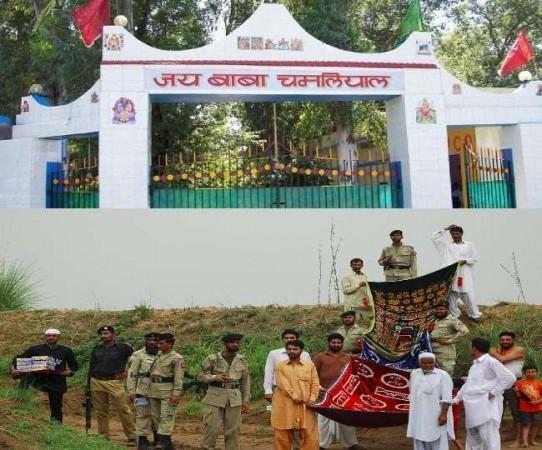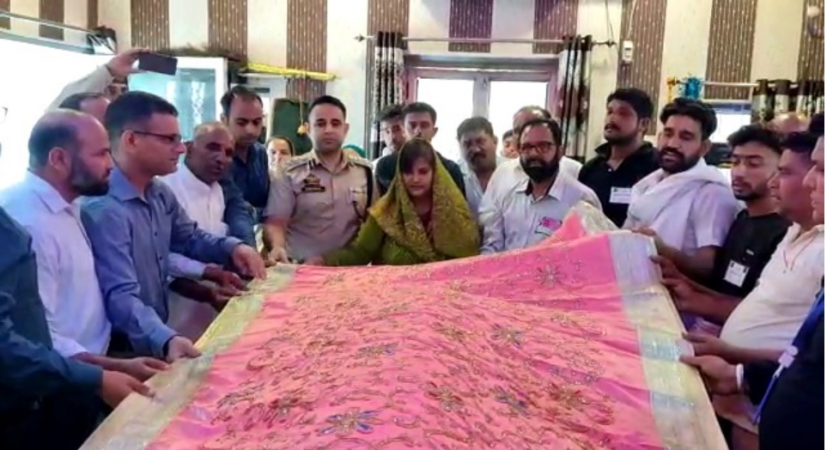
Although thousands of devotees thronged the Baba Chamliyal shrine along the International Border (IB) in Samba district on Thursday for the annual mela, no 'chhadar' was accepted from Pakistan, nor were 'shakkar' and 'sharbat' offered in return, breaking from a long-standing tradition.
The shrine of Baba Dalip Singh Manhas, popularly known as Baba Chamliyal and once seen as a symbol of Indo-Pak bonhomie, is located in the Ramgarh sector of Jammu and Kashmir. It attracts thousands of devotees each year from across the region.
Since June 2018, the shrine has not hosted any delegation from Pakistan after four Border Security Force (BSF) personnel, including an assistant commandant, were killed in unprovoked cross-border firing.
This year, the mela was held under tight security arrangements, particularly as it followed Operation Sindoor conducted in May.
Pakistan Rangers previously received 'shakkar' (sacred clay) and 'sharbat' (holy water) from the shrine, believed to possess healing properties for skin ailments.

Earlier, Indian officials would go to the Zero Line, where ceremonial exchanges were held between our civil administration and their counterparts, along with BSF and Pakistan Rangers.
Since 2018, due to Pakistan's shameful act that led to the martyrdom of four of our officers, the Government of India decided that we would celebrate the mela on our side, and they on theirs.

Significance of the Holy Shrine
Located along the IB, the Baba Chamliyal shrine is considered the most revered spiritual site in the region. Every year, on the fourth Thursday of June, devotees from both India and Pakistan used to participate in the Baba Chamliyal Mela, reinforcing a spirit of harmony across the border.
Baba Dalip Singh Manhas, revered by people of all faiths for his saintly life and healing powers, lived nearly 327 years ago. The village where the shrine stands is named after him. Legend has it that Baba Chamliyal was beheaded by adversaries disturbed by his growing spiritual influence. His body was taken to Saidanwali village in Pakistan, around 300 metres from the border, while his head remained on the Indian side, now known as Chamliyal.
It is believed that wherever his blood fell, the soil became fertile, and a well was dug at the site where his head was placed. Over time, his devotees built a tomb in his memory. The soil and water from the shrine are considered sacred and are widely believed to cure skin diseases.
No Ritual Exchange in 2024
This year, officials confirmed that there was no traditional exchange of 'chadar', 'shakkar', or 'sharbat' between the two sides due to prevailing tensions. Traditionally, Pakistani devotees would send a chadar (holy cloth) to the shrine, and in return, they would receive shakkar and sharbat, viewed as sacred by the faithful.
Before the 1971 Indo-Pak war, Pakistani devotees were even permitted to cross the border to attend the mela in person.
As per tradition, the Commandant of the 101st Battalion of the BSF, Alkesh Kumar Sinha, was the first to offer a chadar at the saint's tomb during a pre-dawn ceremony, marking the official commencement of the mela.
"This is a 327-year-old shrine that commands immense respect among devotees. I arrived at the shrine on Wednesday night to participate in the early morning prayers," the officer told reporters.
He added that the district administration, the shrine committee, and the BSF are working in close coordination to ensure the successful and secure conduct of the mela. "Security has been significantly enhanced along the border in light of the festival," he said.
















